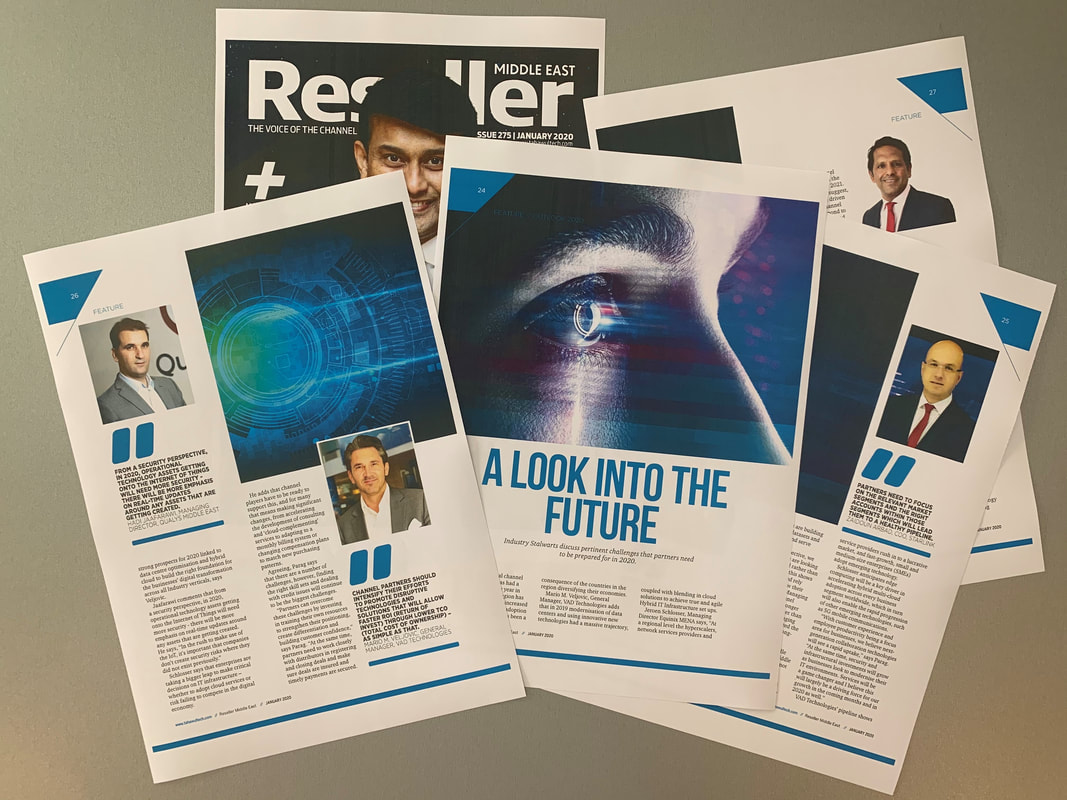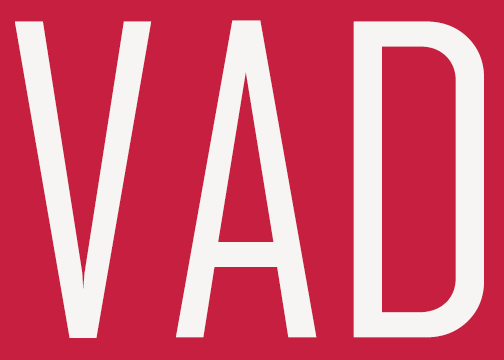|
Tahwultech | Reseller Middle East’s newly appointed Deputy Editor Sharon Saldanha discussed with VAD’s General Manager Mario M. Veljovic and other Industry Stalwarts pertinent challenges that partners need to be prepared for in 2020. The regional channel industry has had a challenging year in 2019. The region has dramatically increased its speed and adoption of cloud technology – this has been a consequence of the countries in the region diversifying their economies.
Mario M. Veljovic, General Manager, VAD Technologies adds that in 2019 modernisation of data centers and using innovative new technologies had a massive trajectory, coupled with blending in cloud solutions to achieve true and agile Hybrid IT Infrastructure set ups. Jeroen Schlosser, Managing Director Equinix MENA says, “At a regional level the hyperscalers, network services providers and general ICT providers are building regional hubs where datasets and applications can live and serve regional demand.” “From a vendor perspective, we are seeing more vendors are looking towards a channel model rather than a direct selling method – this shows that vendors truly trust and rely on a channel model to grow their business,” says K.S Parag, Managing Director, FVC. “From a channel perspective, we’ve seen a stronger focus on solution selling rather than box mobbing – this is encouraging to see as we’ve always supported the solution selling approach for longterm success.” According to Hadi Jaafarawi, Managing Director, Qualys Middle East, cloud deployment in the Middle East and North Africa (MENA) is not as advanced as it is in other parts of the world, but infrastructure development is picking up speed as governments fund public initiatives, service providers rush in to a lucrative market, and fast-growth, small and medium-size enterprises (SMEs) adopt emerging technology. Schlosser anticipates edge computing will be a key driver in accelerating hybrid multi-cloud adoption across every business segment worldwide, which in turn will also enable the rapid progression of other emerging technologies, such as 5G mobile communications. “With customer experience and employee productivity being a focus area for businesses, we believe nextgeneration collaboration technologies will see a rapid uptake,” says Parag. “At the same time, security and infrastructural investments will grow as businesses look to modernise their IT environments. Services will be a game changer and I believe this will largely be a driving force for our growth in the coming months and in 2020 as well.” VAD Technologies’ pipeline shows strong prospects for 2020 linked to data centre optimisation and hybrid cloud to build the right foundation for the businesses’ digital transformation across all Industry verticals, says Veljovic. Jaafarawi comments that from a security perspective, in 2020, operational technology assets getting onto the Internet of Things will need more security - there will be more emphasis on real-time updates around any assets that are getting created. He says, “In the rush to make use of the IoT, it’s important that companies don’t create security risks where they did not exist previously.” Schlosser says that enterprises are taking a bigger leap to make critical decisions on IT infrastructure – whether to adopt cloud services or risk failing to compete in the digital economy. He adds that channel players have to be ready to support this, and for many that means making significant changes, from accelerating the development of consulting and ‘cloud-complementing’ services to adapting to a monthly billing system or changing compensation plans to match new purchasing patterns. Agreeing, Parag says that there are a number of challenges, however, finding the right skill sets and dealing with credit issues will continue to be the biggest challenges. “Partners can overcome these challenges by investing in training their own resources to strengthen their positioning, create differentiation and building customer confidence,” says Parag. “At the same time, partners need to work closely with distributors in registering and closing deals and make sure deals are insured and timely payments are secured. Alignment with the distributor’s and vendor’s go-to-market strategy can help partners be prepared for solution selling to ensure customer satisfaction and increased profitability.” Jaafarawi opines that MSPs and consultants have been seeking a single platform that allows them to perform security assessments across on-premises environments, endpoints and clouds. This continues to be a challenge as most times, they do not have enough IT workers to catalog what’s running on a network. He says, “In order to overcome this hurdle, they need technology that can help them perform multiple ongoing vulnerability assessment engagements from a single, centralised and self-updating platform that consolidates their technology stack, including on-premises environments, endpoints and clouds, reducing total cost of ownership (TCO).” Analyst firm IDC has stated that at least 30 percent of channel industry players will not exist in the format we know them today by 2021. As the findings of this study suggest, many of these changes will be driven by cloud, and it will be the channel players that are agile and respond to these changes, that will survive and thrive, says Schlosser. Parag says, “Disruptive technologies like AI and Cloud along with security are dominating IT investments. Partners need to be cognizant of this to help customers choose the best solutions.” Zaidoun Arbad, COO, StarLink, says, “Customer investments are moving from CAPEX to OPEX and vendors are transitioning to more predictable revenue streams through Software and license subscriptions, says Arbad. “This calls for consumption models that have a right balance between cost, efficiency and productivity. Therefore, partners need to become more user-friendly and offer options such as Pay-As-You-Go, which provides them with flexibility and scalability,” he adds. However, Jaafarawi points out that today’s issues are getting exploited faster than traditional patching schedules can cope with. The sheer variety of platforms in place means that changes can affect multiple systems running in different places. He says, “New technologies like cloud and containers can run intermittently, getting missed by scheduled scans. For 2020, more companies will have to move over to real-time vulnerability scanning, looking for issues as they occur.” Schlosser says that enterprises must focus on ensuring the availability, performance, security and reliability of a massive set of applications while operating in a cost-effective and scalable manner. He adds, “To meet these evolving needs, partners must team up together to develop solutions to help enterprises accelerate hybrid cloud.” “Partners need to focus on the relevant market segments and the right accounts within those segments which will lead them to a healthy pipeline,” says Arbad. “Furthermore, a holistic solution-selling approach with well-integrated technology vendors and services should be the go-to marketing strategy.” Veljovic comments that channel partners should intensify their efforts to promote disruptive technologies and solutions that will allow faster ROI (Return of Invest) through lower TCO (Total Cost of Ownership) – as simple as that. Parag says, “Apart from focusing on specialising in specific technologies, partners must invest in building a strong and skilled team that is not only capable of supporting technology implementations, but also building customer confidence.” The January 2020 Edition of Reseller Middle East can be found online here: https://issuu.com/resellerme/docs/resellermiddleeast_20200112/24 or just visit: www.tahawultech.com
0 Comments
Leave a Reply. |
Archives
February 2024
Categories |
ServicesSales
Pre-sales Training Marketing Finance Logistics |
Company |
|


 RSS Feed
RSS Feed
